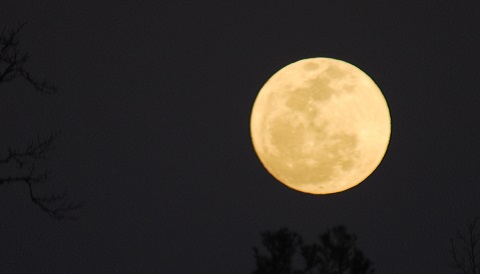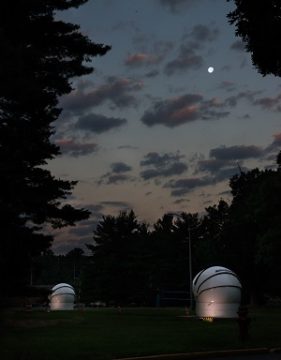A new study will take the old standard of Moon brightness to a new level of precision.

Dave Dickinson
For many a deep-sky astrophotographer, the Moon is something to be avoided. But for Earth-observing satellites, the Moon serves as a crucial calibration source — and it's about to get an overhaul.
The Moon doesn't produce its own light, of course: Its surface reflects the light of the Sun. But even though the Moon is airless and practically unchanging, not every lunar reflection is the same. The brightness of the Moon depends on the exact angle between the Earth, Moon, and Sun.
For example, the brightness of a full Moon is usually quoted at magnitude around –13, about 14 magnitudes or 400,000 times fainter than the Sun. (With a mean albedo, or reflectivity, of just 13%, the Moon is actually as dark as worn asphalt.) Yet the full Moon is about six times brighter than a first- or last-quarter (half-illuminated) Moon. That's because, during the full Moon, sunlight strikes the lunar surface nearly straight on from Earth's perspective, with few shadows.
The Moon-Sun-Earth angles would be easy enough to calculate if the Moon were in a circular orbit, but not only does the Moon vary in distance during its elliptical orbit around Earth, it also rocks slowly back and forth (libration) and side to side (nutation) as it keeps one face turned perpetually Earthward. As a result, the angle of sunlight on the Moon's face follows a complex but predictable cycle that repeats roughly every 20 years.
Until now, the intricacy of those changes have limited the Moon's usefulness as a calibration source. A new project from the National Institute of Standards and Technology (NIST) plans to refine this standard in an ambitious project.
Gazing Moonward

Jennifer Lauren Lee/NIST
The current uncertainty for the brightness of the Moon lies between 5% and 10%. But Earth-observing satellites require narrower wiggle room of less than 1%. Otherwise, gaps between missions mean missing out on important information.
"You lose the ability to stitch together measurements from different satellites to determine long term trends," says Stephen Maxwell (NIST) in a recent press release.
More precise measurements are feasible. "The Moon's reflectance is stable to 1 part in 100 million per year," says Joe Rice (NIST). "The sunlight that illuminates the Moon does vary over an 11-year cycle, but that amount is only 0.1% across the spectrum."
The heart of the effort, still under development, is a 6-inch (150-mm) telescope equipped with a calcium fluoride lens (often used in spectroscopic instruments), which will enable the telescope to focus the Moon's light across ultraviolet, visible, and infrared wavelengths. Color calibration will occur nightly against broad- and narrowband light sources placed 15 to 30 meters away.
The multi-wavelength information is crucial, as Earth-observing satellites utilize the Moon's light to ensure that one satellite's "red" isn't another satellite's "yellow." Color can help satellites investigate algal blooms, trends in crop health, and more.
The project is scheduled to begin operations under the clear skies of Mauna Loa Observatory on Hawai'i in 2018. Although the pattern of illumination angles varies over 20 years, researchers expect to collect enough data in just 3 to 5 years to cover 95% of the possible angles.
The monitoring results will come just in time for the next generation of Earth-observing satellites, including JPSS-1, which is set to launch next month from Vandenberg Air Force Base in California on November 10th.
Perhaps we shouldn't curse the next bright full Moon after all.
 0
0









Comments
You must be logged in to post a comment.